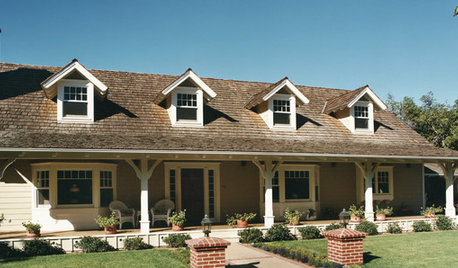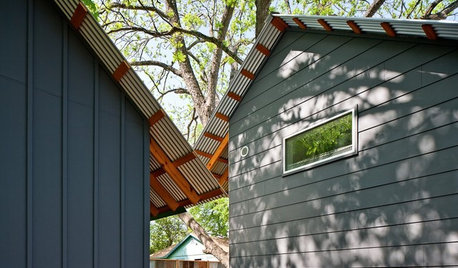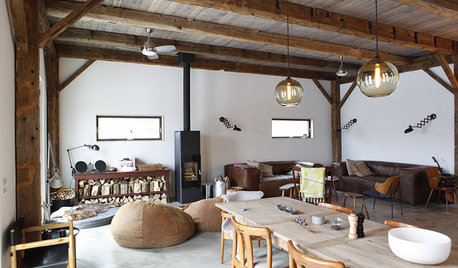Substitutes for Fiberglass Insulation
Larry Wasson
16 years ago
Related Stories

GREEN BUILDINGEcofriendly Cool: Insulate With Wool, Cork, Old Denim and More
Learn about the pros and cons of healthier alternatives to fiberglass and foam, and when to consider an insulation switch
Full Story
REMODELING GUIDESCool Your House (and Costs) With the Right Insulation
Insulation offers one of the best paybacks on your investment in your house. Here are some types to discuss with your contractor
Full Story
ROOFSNo Substitute for the Natural Beauty of Wooden Roof Shingles and Shakes
This natural, renewable roof option brings weathered character and nostalgic appeal to traditional-style homes
Full Story
GREEN BUILDINGInsulation Basics: Natural and Recycled Materials
Consider sheep’s wool, denim, cork, cellulose and more for an ecofriendly insulation choice
Full Story
REMODELING GUIDESHouzz Planning: How to Choose a Front Door
Wood, Fiberglass or Steel? Find the Right Material for Your Entry Door
Full Story
GREEN BUILDINGInsulation Basics: Heat, R-Value and the Building Envelope
Learn how heat moves through a home and the materials that can stop it, to make sure your insulation is as effective as you think
Full Story
MATERIALSInsulation Basics: What to Know About Spray Foam
Learn what exactly spray foam is, the pros and cons of using it and why you shouldn’t mess around with installation
Full Story
REMODELING GUIDESFiber Cement Siding Takes a Front Seat
Not just a wood or vinyl substitute, fiber cement is a stellar siding choice in its own right for modern home exteriors
Full Story
HOUZZ TOURSHouzz Tour: Ecofriendly Getaway in the Catskills
A salvaged barn frame and modern materials create a cozy and comfortable weekend home for a New York couple
Full Story
GARDENING AND LANDSCAPING12 Naturally Beautiful Hot Tubs
Prefer a no-plastic look for your patio or yard? Wood, stone and concrete make these hot tubs fit right in with nature
Full Story










jcin_los_angeles
Larry WassonOriginal Author
Related Professionals
Highland Kitchen & Bathroom Designers · Pleasanton Kitchen & Bathroom Designers · White House Kitchen & Bathroom Designers · Bellevue Kitchen & Bathroom Remodelers · Fairland Kitchen & Bathroom Remodelers · Galena Park Kitchen & Bathroom Remodelers · Glen Carbon Kitchen & Bathroom Remodelers · Islip Kitchen & Bathroom Remodelers · League City Kitchen & Bathroom Remodelers · Oklahoma City Kitchen & Bathroom Remodelers · Saint Helens Kitchen & Bathroom Remodelers · Schiller Park Kitchen & Bathroom Remodelers · Wilmington Kitchen & Bathroom Remodelers · Providence Architects & Building Designers · Spring Valley Architects & Building Designersworthy
Larry WassonOriginal Author
littledog
edselpdx
worthy
AMRadiohead3885
mackswim
Larry WassonOriginal Author
mightyanvil
worthy
User
mightyanvil
mackswim
User
Larry WassonOriginal Author
brickeyee
marys1000
kpaquette
Larry WassonOriginal Author
alphawsr_yahoo_com